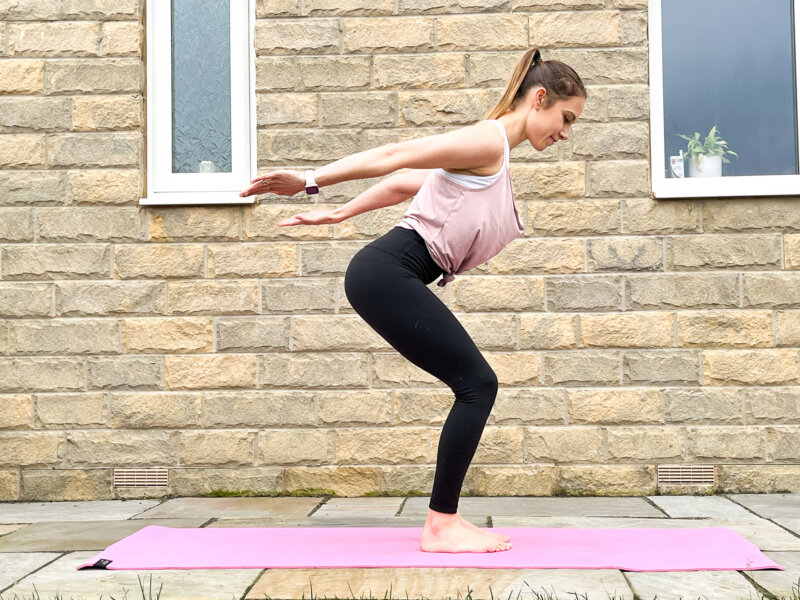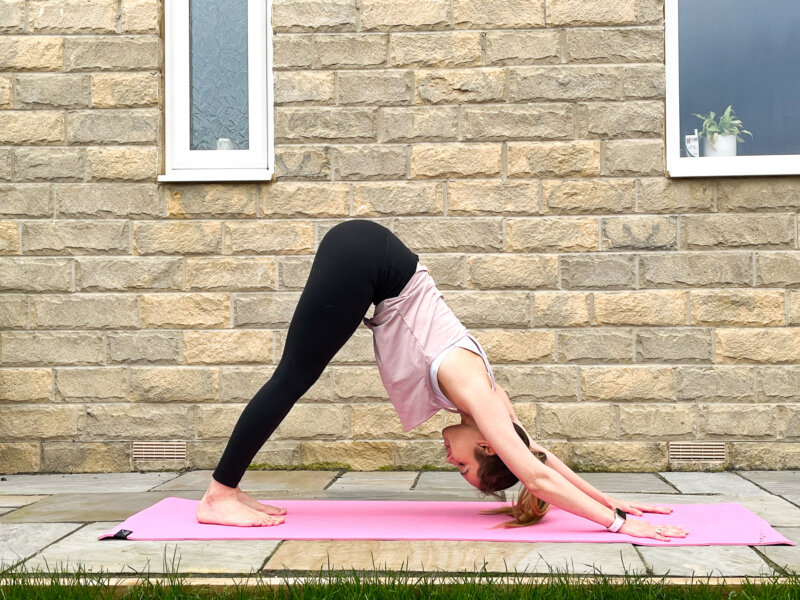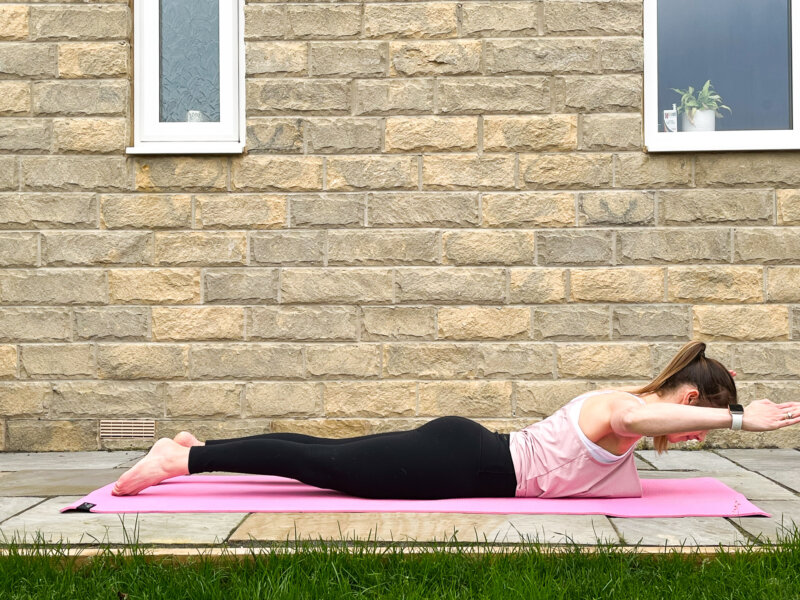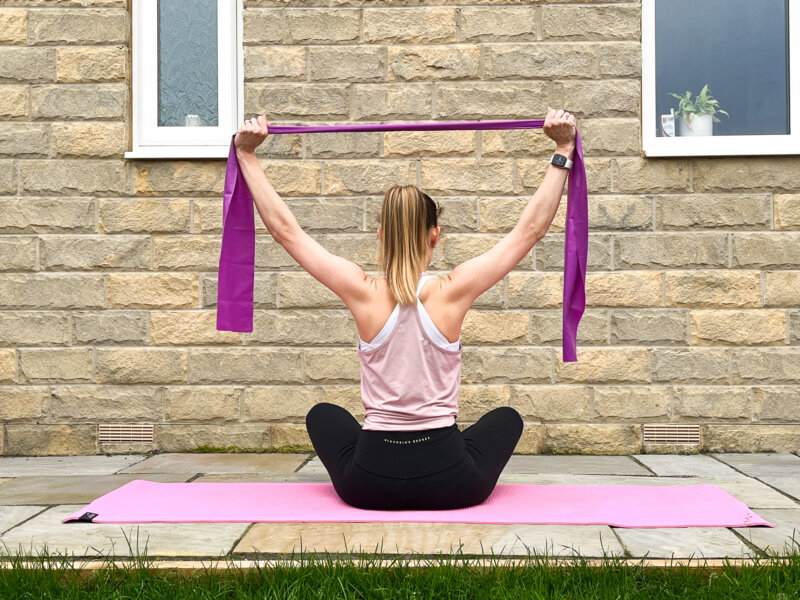Pilates For Better Posture | 'Healthy Body' Pilates Series | Week 2
April 07, 2022Welcome to week 2 of my ‘Healthy Body’ Pilates series where over the course of 6 weeks, I’ll be sharing just a few small ways in which Pilates can help to enhance your body!
Last week, for week 1, I thought I’d start with something that I know affects many of us (and my clients) – back pain and/or discomfort. This week, I wanted to share ways in which Pilates can help to improve posture too!
This is another major concern I see with many of my clients, and I too, love practicing Pilates to help improve my posture – especially after breastfeeding my little body for well over a year!
There are lots of ways in which our posture can change over time from sitting down at a desk job for hours on end, watching the TV and snuggling up on the sofa with our loved ones (as wholesome and beautiful as this is, it can also affect our posture!), driving, standing in queues, crossing our legs whilst sitting down, knitting, writing, reading… and yes, breastfeeding, can all cause our posture to change over time.
These repeated movements start to weaken our upper back muscles and tighten our chest muscles which not only gives the appearance of slouching but it can also be the cause of muscular tightness and back pain to even headaches and in some cases, impaired breathing.
So what is POSTURE?
POSTURE: This is the way you hold your body whether you’re walking, standing, sitting, lying down or in a four-point kneeling position.
The beautiful thing about Pilates is that it focuses on core strength and stability to help support the postural muscles of the trunk, spine and shoulders. Using this powerhouse (the muscles of the abdominals, pelvic floor and back) Pilates exercises support our posture to help build strength in our core allowing our upper body to relax and improve mobility whilst simultaneously relieving tension from the lower body.
Having good posture can:
- Help to reduce back, shoulder and neck pain
- Help to reduce lower body pain in the hips, legs and feet
- Improve mobility in the body
- Improve muscular balance and function
- Help to facilitate and support breathing (by opening through the chest and avoiding compression within this area)
- Help to release tension within the abdominal cavity (again by relieving compression of the organs)
- Improve circulation
- Help to relieve muscular tension
- Help to balance and support the body
Plus so much more!
Ok, beautiful, let’s go!
Here are 5 Pilates exercises to help improve and support your posture:
HELPFUL REMINDERS:
- Think about creating balance within the body by keeping your pelvis level and your hips and shoulders even.
- Draw your shoulders down your back and away from your ears (shoulder stabilisation).
- Working the core also includes working the muscles in the back. Don’t forget core engagement with these exercises as the front and back of your body work together in strengthening that powerhouse of muscles!
I’ve included how many repetitions I’d recommend, however be mindful of your body and tailor these exercises to suit you.
It’s also important to remember that everybody is unique and therefore the way these exercises are performed may need to be tailored to the individual. These step-by-step guidelines are there as a general ‘guide’ and if you require further information or help then please do not hesitate to get in touch.
*Remember to listen to your body and move in a loving way for you. By taking part in this exercise program, you are acknowledging that you are fit, well and healthy to do so and understand that you are performing the exercises at your own risk. Always consult your physician if you’re unsure or if you’re struggling with chronic back pain. And if you’d like to find out more information on how Pilates can help you and your body, then let’s have a chat!
**I have also filmed a YouTube Pilates flow showing you how you can sequence these exercises together which you can find either by clicking here, or by heading to the bottom of this article.

STANDING HUNDREDS
20 Repetitions
Helps improve neutral spine, upper body strength, shoulder stability & back strength.
- Start by standing, feet hip width and finding your neutral spine and shoulders drawing down your back.
- Soften through your knees and hinge forwards from your hips maintaining neutral spine.
- Lengthen through your arms and reach them behind you, palms facing to the wall behind you and keeping your shoulder blades drawing down your back.
- Lift your arms as high as they can go whilst maintaining neutral spine and then perform small pulses from here.
- Breathe in for 4 pulses and out for 4 pulses.

PLANK TO DOWNWARD DOG
6-8 Repetitions
Helps improve core strength and stability (the whole powerhouse of muscles including those of the abdominals, back and pelvic floor), shoulder stability, upper back strength and flexibility of the posterior chain.
- Start in a plank position with your hands underneath your shoulders and one long line of energy from the crown of your head through to your heels. (Option: to lower your knees performing a half plank).
- Protract through your shoulder blades imagining as though you’re pushing the floor away from you. Engage your core and squeeze your glutes to help protect your lower back. Keep your hips in line with your shoulders and avoid drooping your hips or lifting them too high.
- Inhale in Plank.
- Exhale to begin to lift the hips up towards the ceiling, drawing your chest towards your thighs to find Downward Dog.
- The focus here is lengthening through your spine. Relax your head here and imagine as though your arms are framing your head like a picture frame whilst lengthening and elongating the spine. You may choose to soften or bend the knees here and/or lift the heels away from the mat.
- Inhale to come back to Plank.

SWAN DIVE
8 Repetitions
Helps improve core strength & stability, lower back strength, upper back strength & shoulder stability.
- Start by lying prone on the mat (on your front). You may choose to rest your forehead on a yoga block here, pillow or rolled up towel.
- Bring your arms to the sides of your body, bending your elbows to 90 degrees and keeping your elbows in line with your shoulders and forearms on the mat.
- Elongating through the crown of your head, inhale to prepare and on the exhale, begin to float your upper body off the mat whilst keeping your forearms on the ground.
- Keep your gaze down towards the mat, drawing the crown of your head in front of you.
- Keep your feet hip distance on the mat and avoid holding tension your lower body.
- OPTION: To keep your forearms on the ground, or as you lift your upper body, you can float your arms a couple of inches away from the ground.
- Keep your shoulders drawing down your back, squeezing the scapulae together.

REVERSE TABLE TOP
8 Repetitions
Helps core strength, lower back & glute strength, works the entire posterior chain and improves upper body strength. Opens through the front facial line of the body.
- Start seated on the mat with your hands down by the sides of your body, knees bent and feet hip width.
- Draw your shoulders down your back, and on the exhale lift your hips away from the mat up into Reverse Table Top.
- Squeeze your glutes and try to create one line of energy from your shoulders, through to your hips, to your knees.
- Exhale to lower your hips back down to the mat.

RESISTANCE BAND ARM REACHES
8-10 Repetitions
Helps improve posture, upper body strength, upper back strength and shoulder mobility.
- Start in a seated position, grounding down through both sitting bones and lifting tall through the spine.
- Take hold of a resistance band with an overhand grip, a little wider than shoulder width.
- Draw your shoulders down your back, raising your arms overhead. Avoid hunching through your shoulders and keep your spine lifted tall.
- Keeping shoulder stabilisation engaged, start to draw your hands out in a ‘V’ shape, stretching the resistance band and then release bringing the hands back to neutral, lowering the resistance band back down.
Want to learn more about how Pilates can benefit your body?
Why not check these out:
- Online on demand Pilates classes (Practice Pilates with me anywhere, at any time – as long as you have access to internet!)
- My online Pilates Library (A library of a variety of 15 minute workouts so you can tailor your workout to suit your goal, ability and time-frame)
- New to Pilates? Try my 6 Week Beginners Pilates Course (Can be accessed at your own pace)
If you’re brand new to Pilates, having been meaning to try it for a while, establish a more regular Pilates practice, pick it back up after having a few years off, or simply want to learn more, then I’ve created an online course just for you! My 6 Week Beginner Pilates Course is completely online with 6 on demand classes and can be accessed at your own pace. You’ll not only learn the history of Pilates and how it can benefit your body and mind, but also refine your technique and learn how to Practice Pilates safely. How amazing does that sound? Check out my 6 Week Beginners Course here.
Over the course of 6 weeks, I want to share just a few ways in which Pilates can help support and enhance the physical wellbeing of your body so that you can feel more energised, vibrant and full of life – Yes, Pilates is an incredible form of strength training but it’s also a powerful method of mindfulness, meditation and relaxation.
Catch up here:
- Week 1: Pilates For Back Pain
Mindfulness Coaching
DITCH YOUR INNER MEAN GIRL, RELEASE THE OVERWHELM AND LET GO OF STRESS. MINDFULNESS COACHING CAN HELP YOU CONNECT...